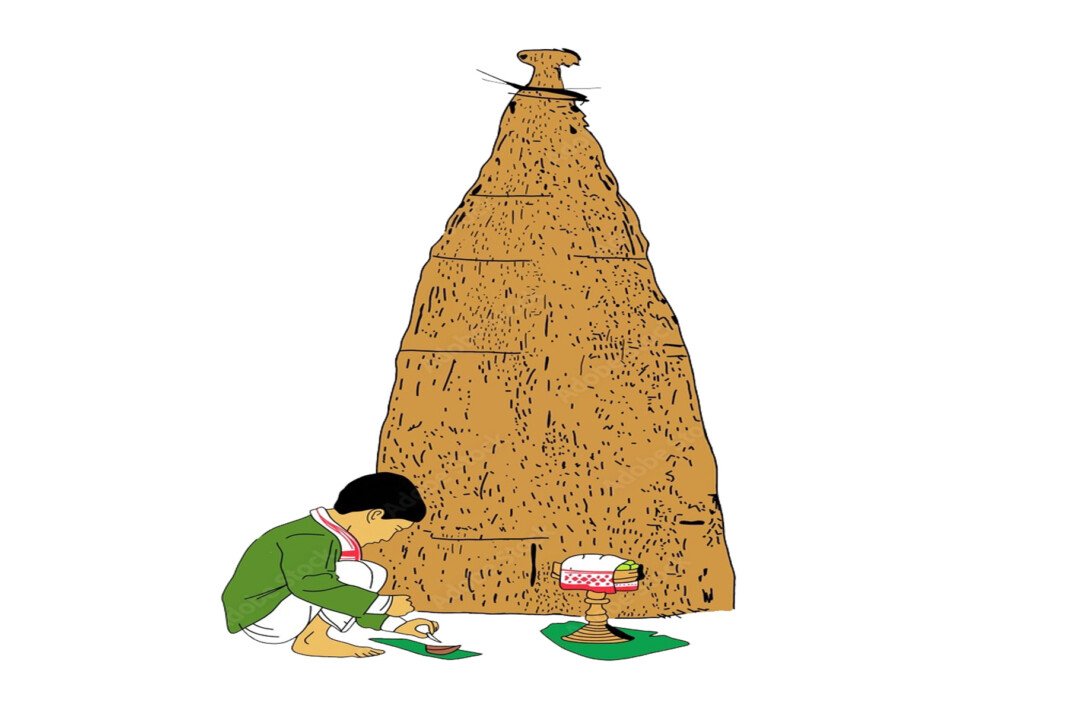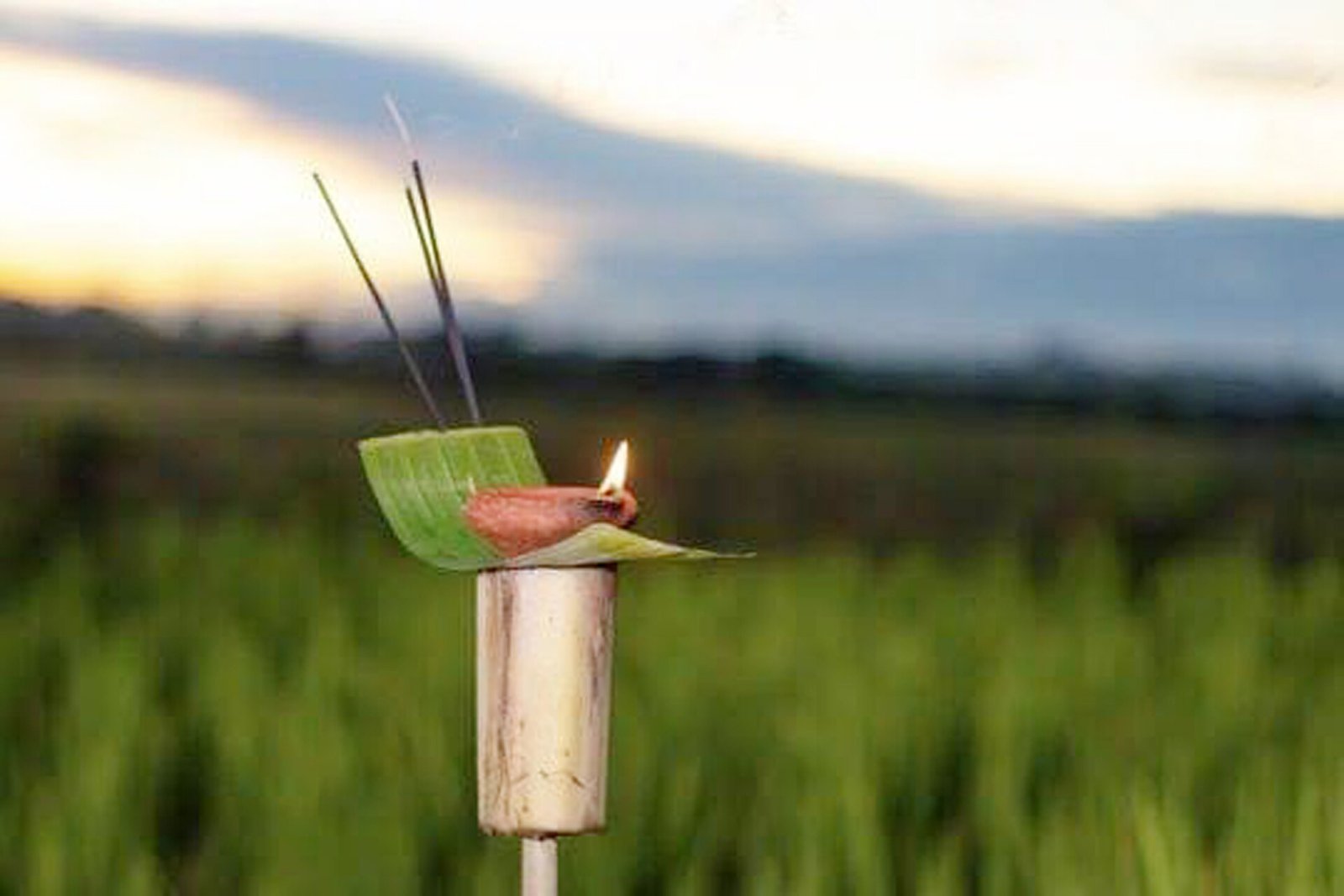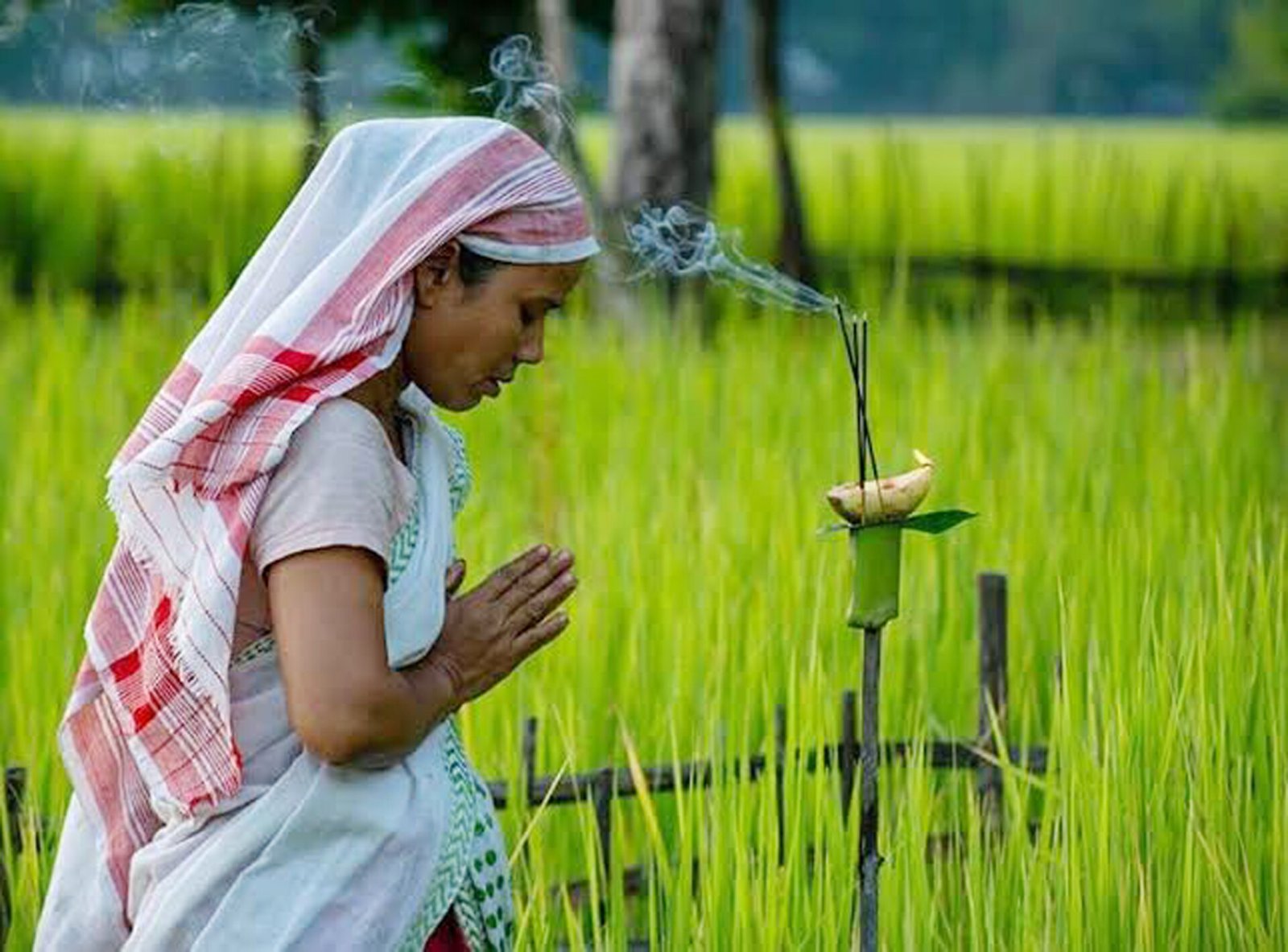By: Dipak Kurmi
The Assamese term “Bihu” finds its roots in the Sanskrit word “visuvat,” particularly associated with the mahavisuva samkranti, symbolizing the vernal equinox at the junction of the Chaitra and Vaisakha months (mid-April). Bihu, a generic term, encompasses three significant Assamese festivals: Bohag Bihu, Magh Bihu, and Kati Bihu. Bohag Bihu, celebrated at the junction of the Assamese months of Chot and Bohag, is also known as Rangali Bihu due to its association with joyous singing and dancing during the springtime. Magh Bihu, occurring in mid-January at the junction of the Assamese months of Puh and Magh, is alternatively called Bhogali Bihu, highlighting its main feature of enjoyment through feasting. Kati Bihu, falling in mid-October at the junction of the Assamese months of Ahin and Kati, is also known as Kangali Bihu or Beggar’s Bihu. This name reflects its lack of connection with feasting or merry-making, as it occurs when the year’s grains are exhausted, and the traditional winter crop is yet to mature. According to P. Goswami, Bohag Bihu aligns with the Vernal Equinox, Kati Bihu with the Autumnal Equinox, and Magh Bihu with the Winter Solstice. The term Bihu can be traced back to the Sanskrit word “visuvan,” signifying equinox. The multifaceted nature of Bihu captures the essence of Assamese culture through diverse celebrations marking the changing seasons.
Magh Bihu is intricately linked to a folk fire ceremony, but the essence lies in the significance of Uruka, the Bihu eve. This prelude to the festive day holds immense importance as womenfolk diligently prepare for the celebrations ahead. Uruka extends beyond a mere day, involving the gathering of fuel, procuring fish from ponds or streams, and if feasible, obtaining some meat. The meticulous preparations for Uruka include the creation of an array of snacks such as Chira, Pitha, laru, and curd. In tribal communities, women take on the task of crafting rice-beer, typically left undistilled. The winter season adds an extra layer to this preparation, requiring four or five days for the beer to reach its matured state. Uruka, with its comprehensive preparations, sets the stage for the grand festivities of Magh Bihu, reflecting the cultural richness and vibrant traditions associated with this Assamese celebration.
Another noteworthy aspect of this Bihu celebration involves the construction of temple-like structures in paddy or open fields, a task predominantly undertaken by young boys. These structures, known as “meji” or “Bhelaghar,” are crafted using green bamboo, dried banana leaves, and hay or paddy stubble. The term “Bhelaghar” may trace its roots to Sanskrit “Mesa-griha” (mesa = bhera/bhela = sheep), where some hairs of sheep or goat are traditionally burnt on the eve of Daul Utsava associated with Krishnaism. In upper Assam, the term “meji” is utilized, potentially originating from Sanskrit “Medha” or “yajna.” These linguistic connections suggest the preservation of ancient associations within the practice of burning Bhelaghar. An interesting observation in Assam reveals that people use firewood in the construction of meji. This tradition adds a unique and cultural touch to the Bihu festivities, connecting the present celebrations with ancient rituals and symbolism.
The Uruka feasting during Magh Bihu can take on the form of a familial gathering or a communal celebration. As the evening descends, the men of the village come together, assembling in the Bhelaghar arena. Here, they engage in Nam-Prasanga, a vibrant exchange accompanied by the rhythmic beats of nagara kettle drums and the melodic tones of bhortals or cymbals. The atmosphere is further enriched by the presence of village cowherds who spend the night in the Bhelaghar. They warm themselves by a crackling fire, utilizing the vegetables they’ve acquired, perhaps spirited away from the villagers’ gardens. In this communal setting, the cowherds partake in the feasting, savoring the edibles offered to them. This amalgamation of music, warmth, and shared sustenance encapsulates the essence of Magh Bihu’s Uruka festivities, creating a memorable experience for all involved.
As the feasting evening concludes, the crack of dawn heralds the next day’s rituals. A family member meticulously ties thin strips of bamboo, jute, or hay around fruit-bearing trees. Simultaneously, a call goes out to the dogs, and they are offered rice. Meanwhile, womenfolk busy themselves cleaning the house and cooking pans. The men and children of the household then proceed to the mejis and bhelaghars, where offerings of delectables are presented to Agni, the God of Fire. Echoing cries of divine names fill the air as the structures are set ablaze. The vivid red flames provide warmth to those who endured the cold night, and the bamboo tubes burst open like celebratory gunfire. Following the fiery spectacle, Brahmins, elderly individuals, or xatola (among Mishings) bestow blessings and mark foreheads with ash. The partially burnt sticks are scattered in the fields, and some pieces may be brought home to be placed near fruit-bearing trees. The belief underlying this ritual is that the ashes and the partially burnt bamboo enhance the fertility of fields and gardens. Drawing a parallel, Frazer notes that Europeans, engaging in similar fire rituals during Lent and midsummer, also held a belief in the potency of ashes and embers for fertility. This custom of tying bands of straw around tree trunks to promote fruitfulness, rooted in Indo-European traditions, resonates in these fire ceremonies, adding a layer of cultural depth to the festivities.
As the morning unfolds, following the burning of mejis and bhelaghars, people gather to partake in a serene session of hymn devotional Vaishnavite singing. Accompanied by the resonant beats of kettledrums and the melodic tones of large cymbals, a collective hymn-singing session takes place. This practice of nam-prosanga or hymn-singing, whether held in the namghar or within households, stands out as a notable feature during the month of Magh, considered auspicious for religious endeavors. In this particular facet of the Magh Bihu festival, the unmistakable influence of Vaishnavism becomes apparent. The harmonious blend of music and devotional singing creates a spiritual atmosphere, embodying the cultural and religious richness associated with this celebration.
On the Samkranti day, which follows Uruka, a dietary shift occurs with the exclusion of meat from meals. The lunch menu predominantly features chira, pitha, curd, and other vegetarian delights. A distinctive delicacy, tekeli-pitha, takes center stage, comprising salted rice powder steamed on the mouth of a small pitcher or kettle, reminiscent of the larger idli. Another delectable offering is sunga-pitha, created by placing moist rice powder in a green bamboo tube and roasting it over an open flame. Traditionally seasoned with salt, some contemporary preferences lean towards a sweet variety. A variation called sunga saul emerges, featuring sticky bara rice steamed in a bamboo tube. Once prepared, the sticky roll is cut into pieces and enjoyed mixed with milk and Gur. Notably, in Sonitpur, a penchant for fried pithas adds a delightful twist to the culinary traditions associated with this festive period. These unique preparations not only satisfy the taste buds but also contribute to the distinctiveness of the Magh Bihu celebration.
As the evening descends, the final meal of the day unfolds, featuring rice – potentially new if not consumed earlier in the Assamese month of Aghon. This is accompanied by a flavorful black gram curry and delectably fried yam, creating a satisfying and wholesome dinner. The following day at noon, a customary practice emerges – the indulgence in a dish known as “maghi panta.” This dish comprises a small portion of leftover rice soaked in water, accompanied by remnants of dal. It is intriguing to note that the tradition of consuming soaked leftover rice might trace its roots to the tribal custom of imbibing rice beer, adding a cultural layer to this culinary ritual.
An intriguing facet of the Magh Bihu celebration is the inclusion of various sports and traditional games across different locations. These engaging activities encompass a spectrum of events, ranging from wrestling, racing, and jumping to the unique competitions of buffalo fighting (moh junj), egg fighting (kani junj), chicken fighting (kukura junj), and bulbuli (a type of small bird) fighting. Notably, the buffalo fighting in Ahotguri, located in the Marigaon district, has gained renown for its fervor and intensity. This dynamic blend of sports and competitions adds an element of excitement and community involvement to the festive atmosphere of Magh Bihu, creating a lively and vibrant celebration. (The writer can be reached at dipaknewslive@gmail.com)







